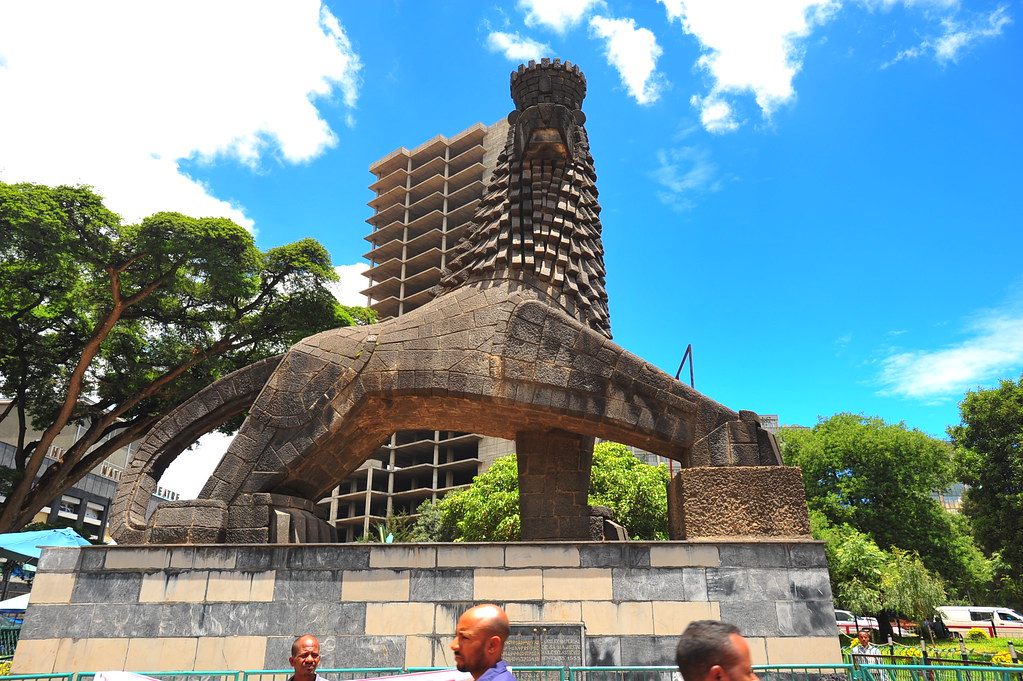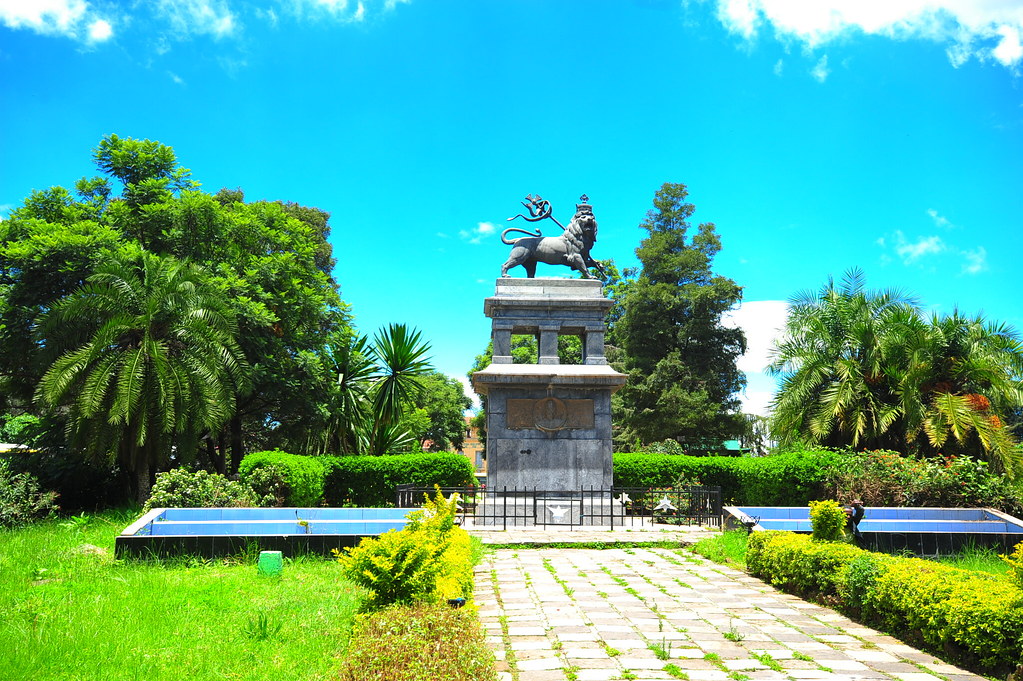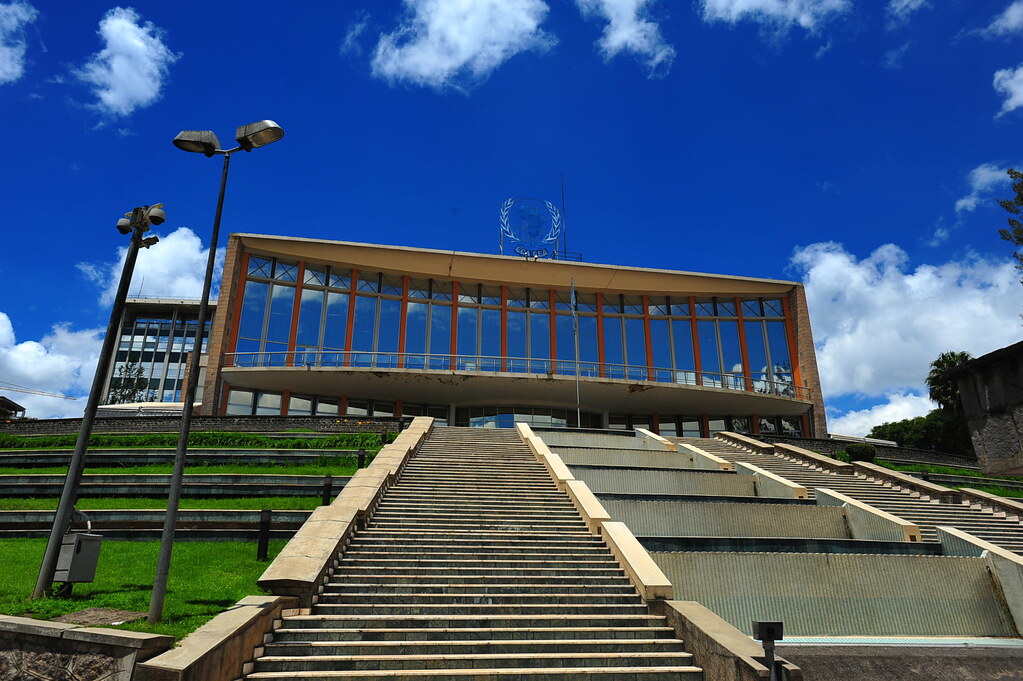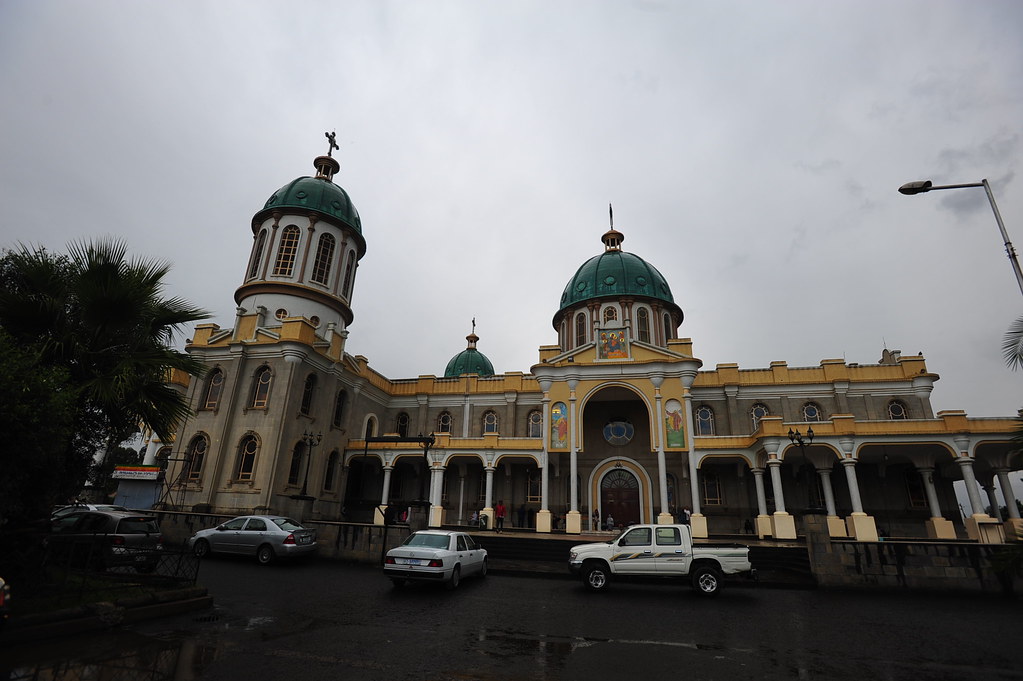The Monsoon Diaries’ first ever trip to sub-saharan Africa just began today with a 12 hour layover in the capital city of Ethiopia, Addis Ababa.
To begin the trip, I got to use 80,000 United Miles to score 2 free business class flights from New York to Frankfurt via Lufthansa Airlines, and Frankfurt to Addis Ababa via Ethiopian Airlines.
But no matter how fancy it was to lie in a flat-bed on the way to Ethiopia, I noticed both local Ethiopians speaking English and foreign travelers (i.e.non-Ethiopians) in business/first class, with local Ethiopian families all sticking together in Economy. The effect of colonialism on the global south still exists, ladies and gentlemen.
We landed in Addis Ababa at 6:00am, local time.
Although Duncan, Kel and I rushed out front to be the first in line to get my visa on arrival ($50 USD per person), staff directed us back upstairs to obtain a transit visa instead as we would only be in Ethiopia for 12 hours. After a few back and forth conversations, we were told that a transit visa would be $70 USD, which made absolutely no sense at all.
So by the time we returned downstairs to get the standard visas on arrival, we were dismayed to see a huge line had already formed — Don’t let them waste your time by fooling you into going upstairs if you only have a day in Ethiopia to explore!
After about 45 minutes in line, we got out passports checked, our photos taken, and visas in our passports. We were then led to another area where we paid $50 USD per person for the visas. Yes, they do accept credit cards!
Once you get your visas, you’d think you go back on the regular line to get your passport checked again, but you can actually skip that line and head out a separate exit into baggage claims.
We then took a yellow cab waiting outside the airport to Tizeze Hotel; you don’t need to haggle as all airport yellow cabs refer to a guy carrying a binder listing standardized fares to various hotels.
Once at Tizeze, we finally rendezvous’ed with Samantha, Mikey and Aaron in the lobby who had stayed the night before.
After getting our bearings and stealing some hotel breakfast, we headed out to our first stop, the National Museum of Ethiopia:
Although pretty small for a national museum, it’s famous for being the home of Lucy (aka Dinkinesh, or “you are wonderful” in Amharic), the famous 3.2 million old hominoid discovered in 1974 that gave credence to the belief that we descended from the ape.
Where Lucy was one of the first humans to be bipedal, I demonstrate how far humans have (or have not) come since her:
We then headed out west.
About 20 minutes of walking up a small hill we reached Saint George’s Cathedral, which was built in 1896 to commemorate Ethiopia’s victory over the Italians.
There will be people praying besides the walls of the church, but you can’t enter inside unless you run into one of the archdeacons of the Church somewhere nearby (or at the adjacent museum) and ask him politely. We hear it’s quite wonderful, but we never got to meet an archdeacon.
To make matters worse, photography of the church, even from the outside, is forbidden (whoops).
Heading out west even further, we ventured towards the Merkato.
We passed by Anwar Mosque on the way there, which also can’t be entered or photographed from the outside (whoops):
Once you reach Merkato on the west side of the city, it feels like you’re about to board a roller coaster. This is arguably the world’s largest outdoor market, and entering it is like throwing yourself into a sea of humanity. There’s not really one place to enter as every space is filled by something to sell or someone who wants to buy; you just go in and immerse yourself.
Nevertheless, be very watchful of your stuff here! Pickpocketers teem aplenty in the market.

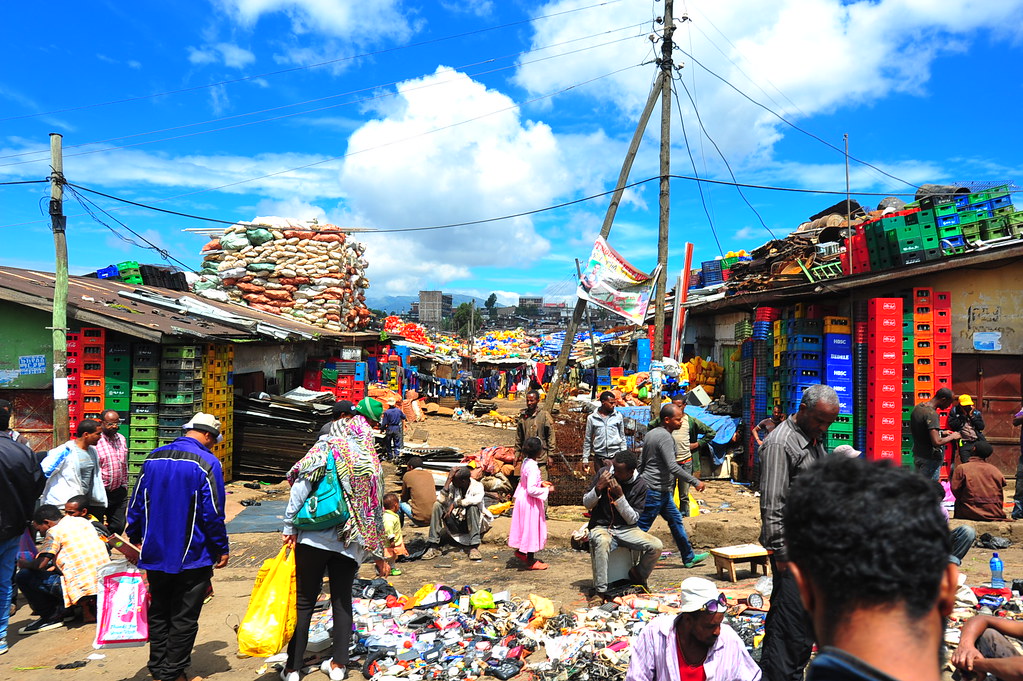
We ended up enjoying being assisted by a local named Gentle, who as a former Army Captain was then jailed by the government due to a political insurgency. He went above and beyond showing us around but most importantly, effectively shoo’ing off persistent beggars looking to get up too close with us.
Making a 90 degree angle south we walked about a mile to reach the Tiglachin (“Our Struggle”) monument, incorrectly sometimes referred to as the Derg Monument (even Google screws this up on their maps). It’s to commemorate the Ethiopian and Cuban soldiers who died in the 1977-1978 war against Somalia.
It was around this point where Kel suddenly found out he had his iPhone pickpocketed and where Mikey quickly deflected a would-be pickpocketing by some children selling magazines. F*ck!!! (You have been warned!)
Outside the National Theater in the southwest part of the city, you’ll come across the Lion of Judah of Haile Selassie statue, carved in 1955 to commemorate Emperor Haile Selassie.
A bit more south is the Lion of Judah of Menelik statue, built in 1930 to commemorate Emperor Menelik.
Turn east and walk along the south edges of the city center, where you’ll pass by open Meskel Square:
And on the southeast part of the city, past Meskel square, is the evocative “Red Terror” Martyr’s Memorial Museum, built as a memorial to the 500,000 people who lost their lives during the oppressively brutal Derg Regime, including the infamous famine of the 1990s.
All the guides here are survivors themselves, and they are gracious in insisting that the museum is free and any donations would be appreciated.
The starkest reminder of the regime’s brutal holocaust on the Ethiopian people are the clothes that have been excavated from the mass graves:
Turning north and walking up, you’ll pass by Africa Hall on your right, home of the United Nations Economic Commission for Africa and the site of the founding of the Organization for African Unity (OAU) which eventually became the African Union.
You can’t get in unless you already have a scheduled appointment.
A bit more north, and completing the circle of our walking tour is the copper-domed Holy Trinity Cathedral, built as a final resting place to the many who died fighting to liberate Ethiopia from Italy and once the largest Orthodox Cathedral in Ethiopia.
Finally all the way near the airport in the most southeast part of the entire city is Medhane Alem (“Savior of the World”), the 2nd largest church in Africa. And just like every other place of worship we passed by today, photography is discouraged (even from the outside!) and entrance is closed off to tourists.
This whole walking tour took us about 4-5 hours, and is about 10 miles in total (aka 20,000 steps according to my pedometer). We’re pooped.
Now it’s off to Nairobi, Kenya on a 7:30pm Kenya Airways flight!
FYI, the free wifi in this airport (ADD) is pretty shit, and while the food options are pretty decent, the city’s rolling blackouts have made the ordeal to obtain said food…difficult.
![]()
- At time of posting in Addis Ababa, Ethiopia, it was 15 °C - Humidity: 82% | Wind Speed: 8km/hr | Cloud Cover: rain showers

















